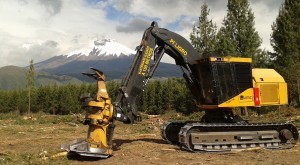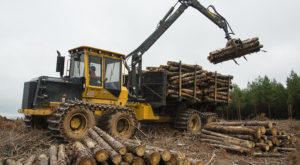– Paul Iarocci
Operating as GBR Contracting, and based in Greytown, KwaZulu-Natal, Grant traditionally sought out pine, gum and wattle contracts in flat terrain. The short haul system Grant traditionally used consisted of a large team of labourers that performed manual felling, debranching, crosscutting and stacking. The tractor-trailer short haul units travelled infield where the short logs were loaded with Bell three-wheelers, then the logs were transported to a location accessible by on-highway haul trucks.
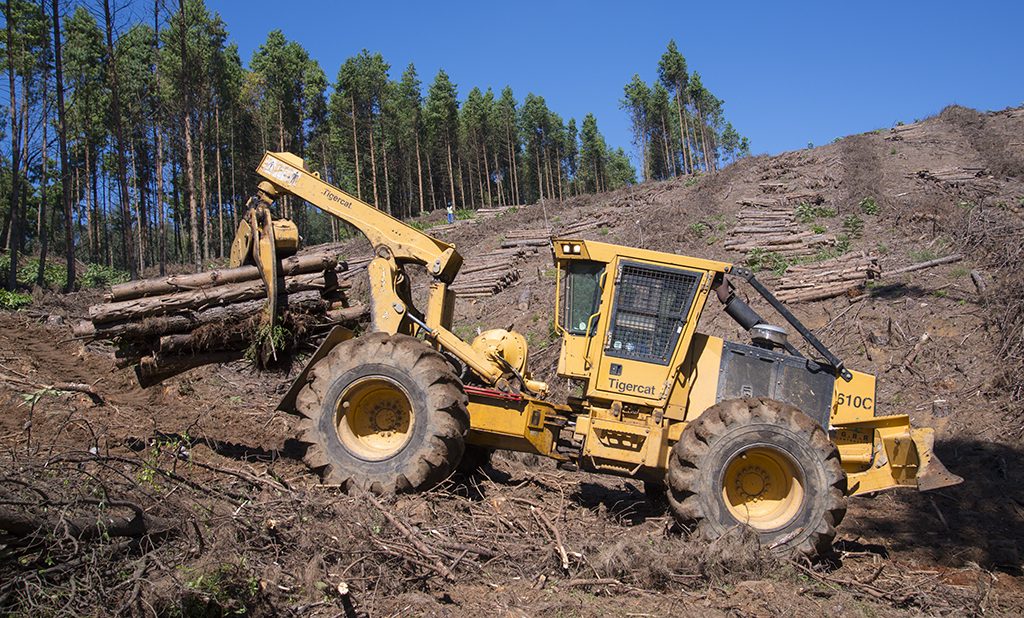
The neat bundles in the background are manually felled, debranched and stacked.
In the case of wattle plantations, a highly specialized extra set of steps are required. The bark must be carefully peeled in long lengths and grouped into 2,4 m (8 ft) long bundles weighing 50 kg (110 lb). Once delivered, the bundles are chipped and tannin is extracted. The highest grades of tannin are for leather tanning and lowest grade is used in the production of glue. Grant notes that since the recession in 2008, the markets for high end tannins have swung from Europe to Pakistan and other Asian countries.
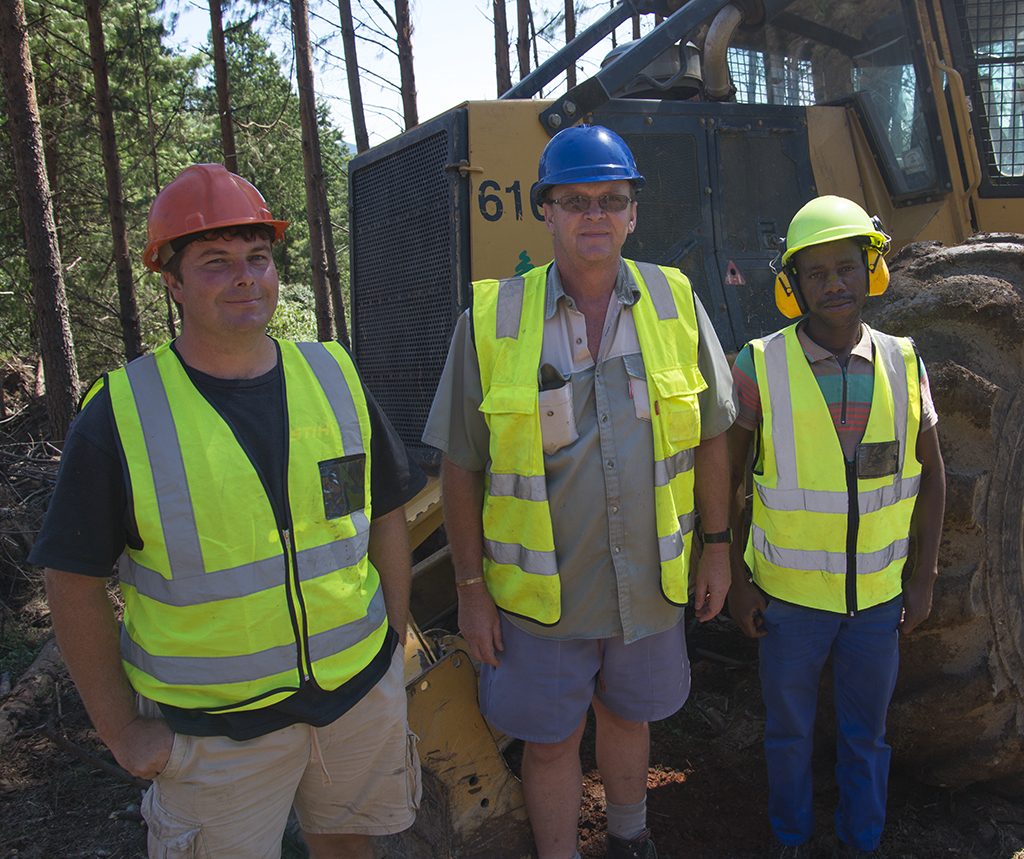
Operations manager, Deon Alexander, owner, Grant Rankin, and 610C skidder operator, Sipo Madondo.
However, back in 2011, an opportunity presented itself. Grant bid on a Mondi wattle contract that involved steep terrain. There is no way that he could tackle such a job with tractors and trailers loaded infield by three-wheelers. So Grant made the decision and commitment to change his short haul system by purchasing a skidder.
After evaluating the different options, he settled on a Tigercat 610C skidder purchased from South African dealer, AfrEquip. “One of the reasons we chose the Tigercat over other brands is the fact that the machine was going to be working on steep hills with dropouts and we liked the idea of the hydrostatic braking,” explains Grant.
The skidder is the crux of the whole operation. If it stands, nothing gets delivered.
– Grant Rankin
In addition, the size and capacity of the machine is optimally matched to his operation. “I’m very happy with the production and how it works. I used a smaller Deere skidder at one time and realized that I had too much work for a machine like that. Lacking both in speed and load capacity, it only did half the production of the 610C.” The skidder has changed Grant’s business and added flexibility to the type of contracts he can bid on for his main clients, Sappi and Mondi. The trees are manually felled, debranched, crosscut and stacked in grapple sized bundles by hand. Once all this is complete and the ground-based workers have moved on to the next cut block, the skidder comes in and moves the stacks, averaging around one tonne, to roadside. A three-wheeler loads the trailers with a ten to fifteen tonne payload (1 tonne equals 1.1 ton).
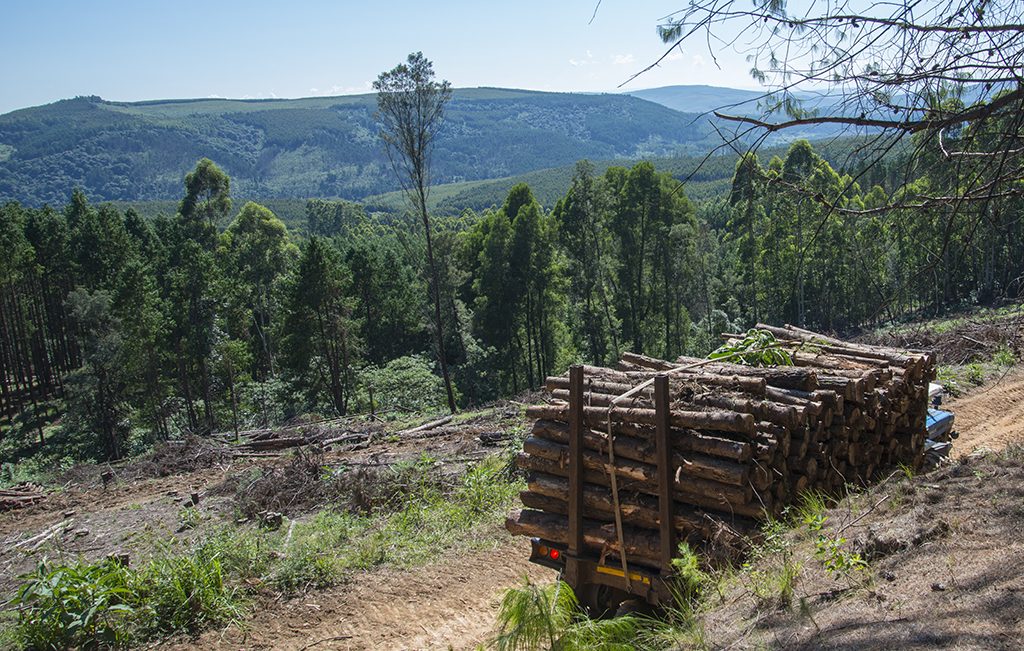
Tractor-trailer cycles average 30 minutes with ten to fifteen tonne payloads.
The tractor-trailer cycle time averages around 30 minutes, depending on distance – which sometimes exceeds three kilometres one-way to the depot area. Then the logs are offloaded, stacked and eventually reloaded onto highway trucks. A tractor-trailer unit could perform as many as twenty cycles per day to get the required volume and the 610C does ten to fifteen cycles per trailer load with fairly short distances and generally uphill skidding. Suffice it to say, the amount of travel required of the equipment is high in these remote higher elevation plantations with very poor road infrastructure. However, short of extensive road engineering, there is no other viable method to get the wood to a location accessible by haul trucks.
“The skidder is the crux of the whole operation,” explains Grant. “If it stands, nothing gets delivered.” So Grant is totally reliant on the machine and demands very high mechanical availability. He can cycle through the tractors, overhauling at planned intervals but with the skidder, it is a different story. The machine works a single twelve-hour shift including the operator’s daily maintenance procedures. “This terrain is too steep and dangerous to work at night,” comments Grant. The 610C has achieved production as high as 350 tonnes but 220 tonnes per day is more typical.
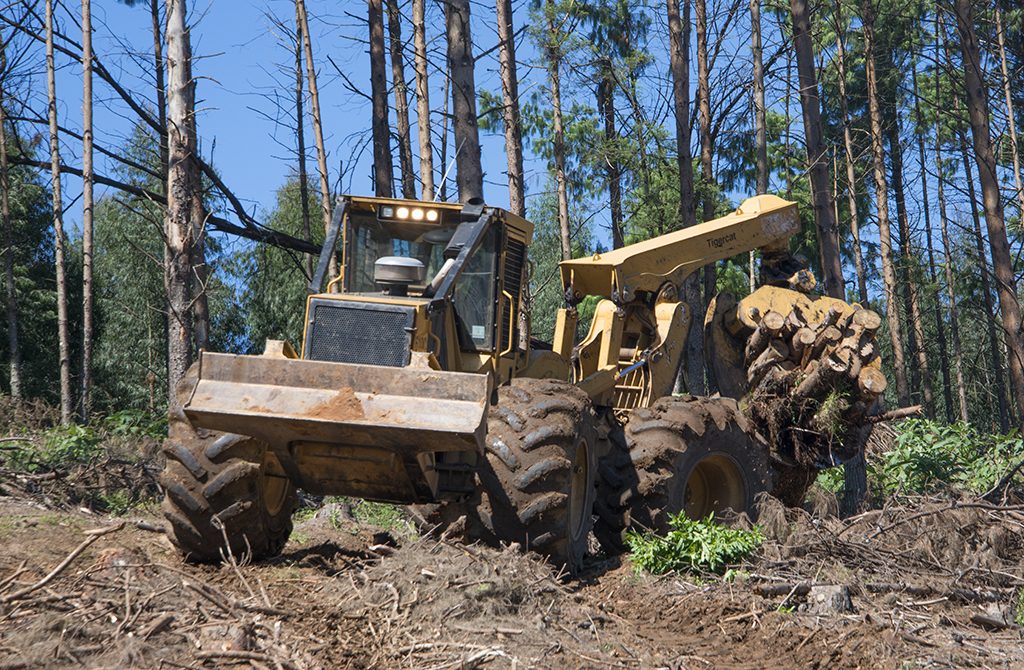
A bundle weighs about one tonne and daily production ranges from 220-350 tonnes per day. It is a tough application for driveline components.
Tigercat product support representative, Jeff Cave fitted the machine with oversize custom fenders to keep the logs from hitting the rear tires, while not so large as to catch the ends of the 2,5 m (approx. 8 ft) logs when lifting the grapple. Grant explored other skidding methods, namely cabling the bundles. While the payload is larger, Grant decided against it, opting for fewer men on the ground near the skidder. (His skidding system can work with no men on the ground whereas the cable method requires two men to feed and attach the cable and one additional man at the loading area to release the load.) The reliance on the extra manpower for the skidding function and the safety issues related to having people on the ground near mobile machinery swayed him toward the grapple method.
To date, the machine has racked up over 11,000 hours with very little in the way of unplanned downtime. Now armed with the Tigercat skidder, Grant is far more flexible in the type of contracts he can bid on, going after terrain that would have been impossible to access with three-wheel loaders and tractor-trailers.






